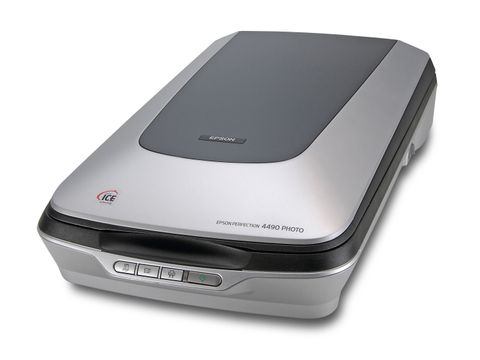TechRadar Verdict
The 4490's a great compromise buy, blending performance with affordability
Pros
- +
Price combined with versatility
- +
Excellent scan quality
- +
Good scanning speeds
Cons
- -
Price combined with versatility
- -
Excellent scan quality
- -
Good scanning speeds
Why you can trust TechRadar
The 4490 offers much of the appeal of the 4990 Photo but at a far lower price.
It boasts the same 4800x9600dpi resolution for a start, though the stratospheric resolution figures being bandied about by scanner makers nowadays do need to be approached with caution.
The theoretical sensor and stepper motor resolution (which is what these figures refer to) are no longer the limiting factor in recording detail. They haven't been for some time. It's the scanner's mechanical and optical precision that determine its resolving power, and that's down to manufacturing and design, not pixels.
Photographers should note that the 4490 can scan both 35mm and medium format films, and comes with Digital ICE dust reduction, which was previously only found on dedicated film scanners. Non-photographers, meanwhile, can automate the usual common scanning tasks - PDF, email, copy and scan - using buttons on the front.
There's even an optional 30-sheet A4 ADF (Automatic Document Feeder). So, although the 4490 appears to have a strong photo bias, it's actually a very efficient and capable office workhorse. This is backed up by speedy scanning times, although performance when descreening our A4 magazine page was a little disappointing.
From a distance, it was hard to distinguish the 4490's scan results from those of the other Epsons; scan quality was first rate. The descreening filter's effect appeared to be a little patchy. Some parts of our page were smoothed effectively; in others the printing pattern remained.
The unscreened 150dpi scan came out very well, though, with clean photo rendition. The 6x4 photo scan was great, but it was apparent by now that all the scanners could accomplish this with ease.
Tech.co.uk was the former name of TechRadar.com. Its staff were at the forefront of the digital publishing revolution, and spearheaded the move to bring consumer technology journalism to its natural home – online. Many of the current TechRadar staff started life a Tech.co.uk staff writer, covering everything from the emerging smartphone market to the evolving market of personal computers. Think of it as the building blocks of the TechRadar you love today.

